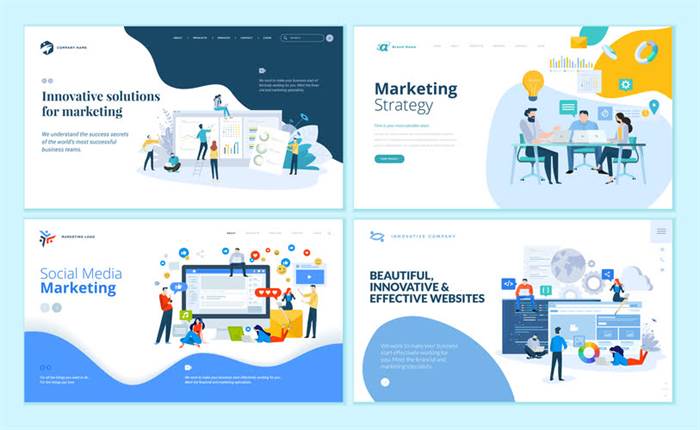Content
Network security refers to securing the perimeter of a data center, and the movement of data inside or outside the data center. This entails using network infrastructure and access controls to manage data flow and prevent digital threats from entering the network. A key example of network security is the use of firewalls to restrict access to specific network ports. But networking is just one piece of the equation and cloud computing encompasses the full gamut of devices, data, and software. Businesses and cloud architects need a robust and secure network perimeter, but there will always be insider threats and data breaches that bypass perimeter protections. For this reason, it’s important to have a multilayered security strategy, like confidential computing, that touches hardware, software, and applications.
First, cloud infrastructure is optimized for accessibility and data sharing, making it difficult for cybersecurity professionals to ensure that only authorized parties can access data. An excellent example of this is link-based data sharing, wherein anyone with a link can gain access to data. First, make sure you send your files to a cloud services provider that encrypts your data. You want to make it as difficult as possible for hackers to get at your information.
Cloud Computing Security Architecture
Reliable industry growth is therefore driving demand for more cloud computing security professionals. As the name suggests, this technology acts a bit like a wall keeping your data safe. How often do you ignore those notifications to update your operating system, browser or email service? Those updates often contain tools designed to protect your devices from the latest viruses or malware. First, servers are usually located in warehouses that most workers don’t have access to. This means that they are scrambled, which makes it far harder for cybercriminals to access.
Other legal dilemmas from the ambiguity of the cloud refer to how there is a difference in privacy regulation between information shared between and information shared inside of organizations. Although each service model has security mechanism, the security https://globalcloudteam.com/ needs also depend upon where these services are located, in private, public, hybrid or community cloud. Consider cloud service models such asIaaS, PaaS, andSaaS. These models require customer to be responsible for security at different levels of service.
What Is Cloud Security?
Thus, proper visibility and access controls are required to monitor types of SaaS applications accessed, usage, and cost. Reliable cloud service provider can put your mind at ease and keep your data safe with highly secure cloud services. Segmentation of services can help an organization control how their data is accessed and stored.

Some cloud providers possess complete control over cloud IT infrastructure without exposing that infrastructure to their customers. Organizations using cloud computing platforms may struggle to identify their cloud assets to take proper measures in order to efficiently protect their data. Additionally, it may not be easy to track the activity of your employees in the cloud. Cloud security consists of different controls, procedures, and technologies to protect your organization’s critical systems and data against cybersecurity threats and risks stemming from cloud environments. Losing valuable data through human error, natural disasters that destroy physical servers, or malicious attacks that aim to destroy data can be disastrous for any company. Moving business-critical data to the cloud can increase these security concerns, since organizations won’t be able to access the affected servers on site.
Efficiently respond to security incidents
The “cloud” or, more specifically, “cloud computing” refers to the process of accessing resources, software, and databases over the Internet and outside the confines of local hardware restrictions. This technology gives organizations flexibility when scaling their operations by offloading a portion, or majority, of their infrastructure management to third-party hosting providers. Deterrent controls discourage nefarious actors from attacking a cloud system.
- Private CloudsUsually dedicated and accessible to only a single organization.
- External data sharing is one of the leading cloud security challenges businesses face.
- In this, we will discuss the overview of cloud computing, its need, and mainly our focus to cover the security issues in Cloud Computing.
- The current pandemic has put people in a situation where they are incredibly vulnerable and susceptible to attacks.
- However, implementation of cloud security processes should be a joint responsibility between the business owner and solution provider.
- This leaves even non-technical users with the duty to self-educate on cloud security.
According to IBM and the Ponemon Institute, from 2021 to 2022, the average cost of a data breach increased from $4.24 million to $9.44 million, which is the highest average cost increase seen in the past 17 years. Instead, attackers exploit misconfigurations, inadequate access, stolen credentials, and other vulnerabilities. security companies list In this blog post, we will cover the primary cloud security threats facing organizations today and how they can be mitigated. Confidentiality of sensitive data may be required by law, policy, or contractual obligation. This type of data is intended for limited and specific use by certain individuals or groups of people.
Hybrid Cloud Security Solutions
Third-party resources are applications, websites, and services outside the cloud provider’s control. These resources may have security vulnerabilities, and unauthorized access to your data is possible. Additionally, unsecured third-party resources may allow hackers to access your cloud data. Therefore, it is essential to ensure that only trusted, and secure resources are used for cloud computing. In addition, it will help ensure that only authorized individuals access data and reduce the risk of unauthorized data loss or breach.

To increase transparency and secure the cloud infrastructure of your organization, you can use dedicated solutions to monitor your personnel’s activity. By watching what your employees are doing during work hours, you’ll be able to detect early signs of cloud account compromise or an insider threat. Certain organizations favor complex multi-cloud and hybrid environments due to their specific needs.
Threat Intelligence with Real-Time Threat Detection and Remediation
Exposed, broken and hacked APIs are responsible for major data breaches, exposing financial, customer, medical and other sensitive data. Because APIs turn certain types of data into endpoints, a change to a policy or privilege levels can increase the risk of unauthorized access to more data than the host intended. As companies continuously transition to a fully digital environment, the use of cloud computing has become increasingly popular.


There are 0 comments